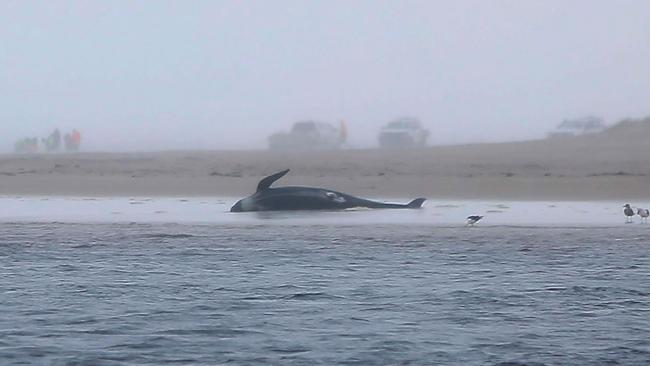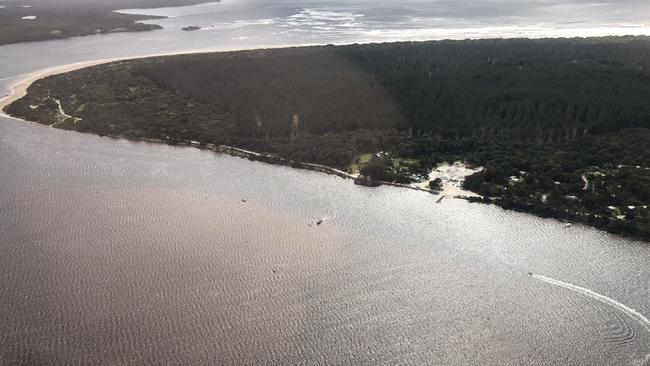What is a pilot whale and how did they get stuck in Macquarie Harbour?
Almost 400 whales have died in one of the largest whale strandings in history. But what caused the whales to strand, and why can’t they get out of Macquarie Harbour? READ OUR EXPLAINER >>
Tasmania
Don't miss out on the headlines from Tasmania. Followed categories will be added to My News.
- ‘Biggest stranding, death toll in Australian history’
- Anyone saying ‘it’s just nature’ did not hear their cries
ALMOST 400 whales have died in the largest whale stranding in Australia’s history.
The stranding is among the largest in the world.
Historically, a stranding in New Zealand was the largest, where in 1918 almost 1000 whales were stranded on the Chatham Islands.
In 1935 around 300 pilot whales were stranded at Stanley, in Tasmania, and in 1985 450 pilot whales stranded at Auckland, New Zealand.
As recent as 2015 337 whales died after a stranding in a remote fjord in Patagonia, in southern Chile, however these were believed to be sei whales.

WHY ARE THEY STUCK IN MACQUARIE HARBOUR?


Entrance to Macquarie Harbour, via Macquarie Heads is between a narrow headland, making it difficult for the whales and the rescuers to get them through the mouth again.
Marine Conservation wildlife biologist Dr Kris Carlyon said it was “definitely” the biggest stranding event in Tasmanian history and it was believed to be the biggest in Australia.
But Dr Carlyon said it was hard to know why the 200 whales found deeper in the Harbour were all dead, while many of those found at Macquarie Heads were still alive.
He also said scientists may remain clueless as to why the whales actually went into the harbour.
The harbour entrance tides also fluctuate between around 90cm and almost dry, making it difficult for the whales to exit of their own accord.
Macquarie Harbour itself has an average depth of 15m, and is as deep as 50m.
According to DPIPWE strandings commonly occur on low profile sandy spits.
Macquarie Heads at the entrance to Macquarie Harbour is a known stranding hot spot for Long-fined pilot whales, Sperm whales and Bottle-nosed dolphins.
WHAT HAPPENS NOW?

Dr Carlyon said euthanasia was an option for those left suffering who cannot be saved but rescue efforts would continue while there was a still a chance of saving more.
It is expected a plan will be hatched on Thursday for disposal of the whale corpses.
There are three options, rescuers can drag the corpses out to sea, they can be left in the harbour, or they can be taken to landfill.
If the corpses are left to decompose in the harbour and outside the harbour, there are fears sharks will be attracted to the area.
Originally published as What is a pilot whale and how did they get stuck in Macquarie Harbour?
